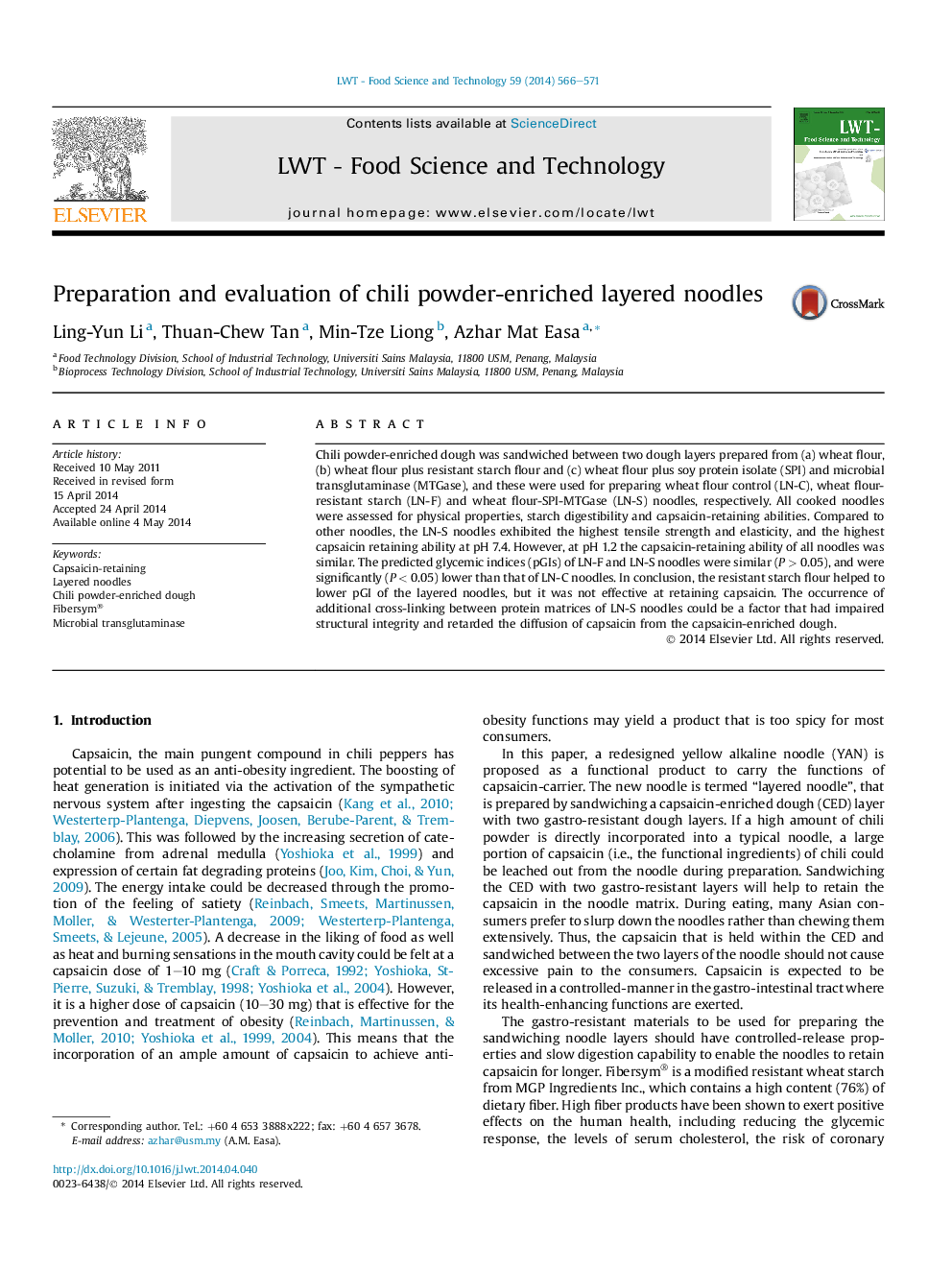| Article ID | Journal | Published Year | Pages | File Type |
|---|---|---|---|---|
| 6403708 | LWT - Food Science and Technology | 2014 | 6 Pages |
â¢Innovative layered noodles with capsaicin in the core.â¢Physical, digestibility and capsaicin-retaining properties of layered noodles.â¢Structural integrity of noodles enhances capsaicin retainability.
Chili powder-enriched dough was sandwiched between two dough layers prepared from (a) wheat flour, (b) wheat flour plus resistant starch flour and (c) wheat flour plus soy protein isolate (SPI) and microbial transglutaminase (MTGase), and these were used for preparing wheat flour control (LN-C), wheat flour-resistant starch (LN-F) and wheat flour-SPI-MTGase (LN-S) noodles, respectively. All cooked noodles were assessed for physical properties, starch digestibility and capsaicin-retaining abilities. Compared to other noodles, the LN-S noodles exhibited the highest tensile strength and elasticity, and the highest capsaicin retaining ability at pH 7.4. However, at pH 1.2 the capsaicin-retaining ability of all noodles was similar. The predicted glycemic indices (pGIs) of LN-F and LN-S noodles were similar (PÂ >Â 0.05), and were significantly (PÂ <Â 0.05) lower than that of LN-C noodles. In conclusion, the resistant starch flour helped to lower pGI of the layered noodles, but it was not effective at retaining capsaicin. The occurrence of additional cross-linking between protein matrices of LN-S noodles could be a factor that had impaired structural integrity and retarded the diffusion of capsaicin from the capsaicin-enriched dough.
